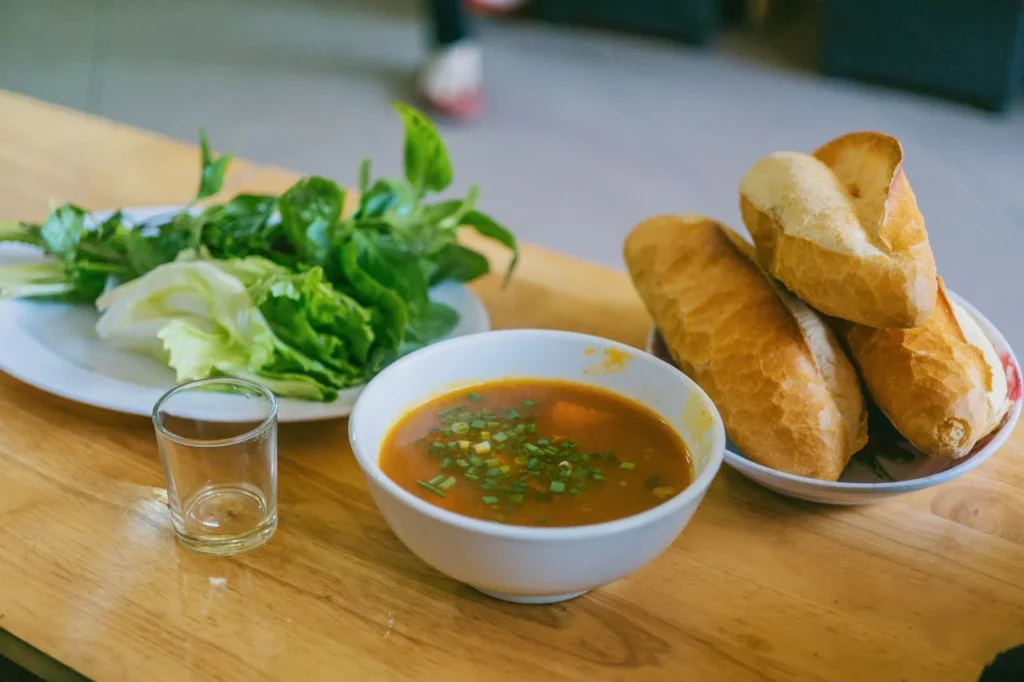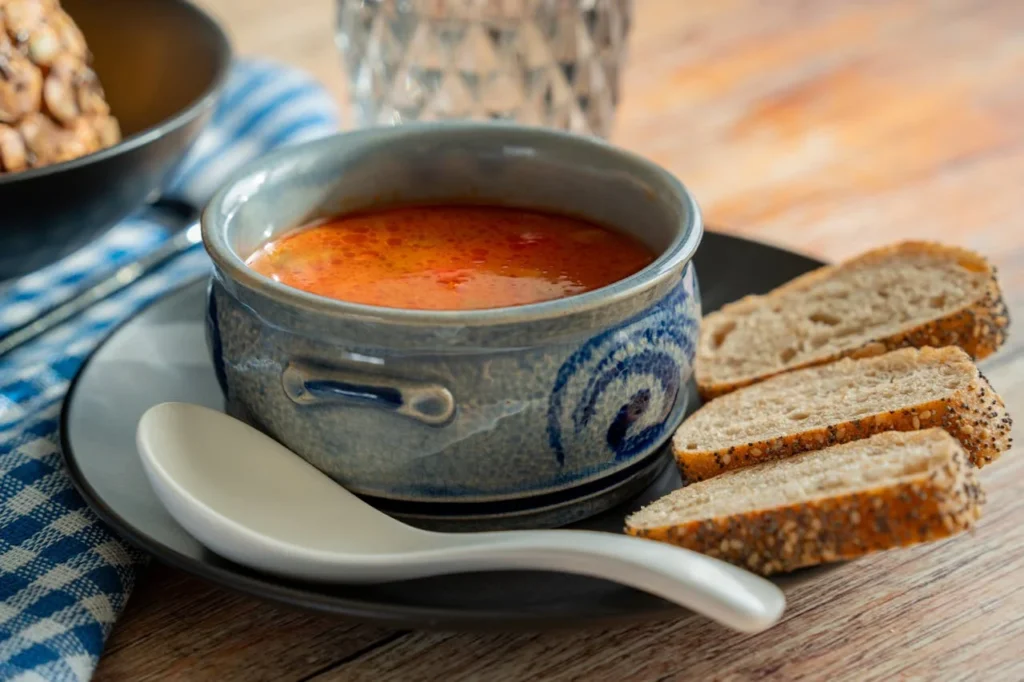Soup is one of life’s simplest pleasures a bowl that can warm, heal, or comfort you. Yet this humble dish carries surprisingly complex rules about how it should be eaten. The way you lift your spoon, sip your broth, or handle the chunks floating within can reveal where you are in the world and how well you understand its culture.

From a refined consommé in France to a hearty ramen in Japan, each culture has its own way of showing respect for soup. Let’s journey through the fascinating world of global soup etiquettes where sipping, slurping, and scooping each tell a story.
Western Soup Etiquette: The Quiet Grace Of Dining
In Western dining, soup etiquette is about elegance, restraint, and quiet enjoyment. There’s a rhythm to it, a balance between refinement and practicality.
1. The Correct Posture
Sit upright and poised. Bring the spoon to your lips rather than leaning towards the bowl. Keep your non-eating hand resting gently on your lap or table edge a posture that signals composure.
2. Scooping The Soup Properly
Always dip your spoon away from you, never toward you. This motion helps avoid spills and looks graceful. Fill the spoon only three-quarters full overfilling is both clumsy and risky.
If the soup is hot, resist the urge to blow on it. Instead, stir gently and let it cool naturally. Patience is part of the charm.
3. Sipping Quietly
Sip from the side of the spoon, not the tip, and do so softly. After each spoonful, rest the spoon inside the bowl, not dangling mid-air. Quiet, steady movements are key.
4. Handling Solids
- Small bits of vegetables or noodles are eaten along with the broth.
- Larger pieces can be cut softly using the edge of the spoon never use a knife.
- Inedible flavourings like bay leaves or peppercorns should be placed discreetly on the bread plate.
5. Finishing Gracefully
If the soup bowl is placed on a plate, leave the spoon inside the bowl once finished. If served alone, place the spoon on the saucer or underplate never inside an empty bowl. And no, you don’t tilt the bowl or drink directly from it.
6. Bread And Soup Pairing
Bread is a companion, not a sponge. In formal dining, tear off small pieces, butter them, and eat separately. In casual meals, dipping a piece of bread in your tomato soup is perfectly acceptable and deliciously human.

Soup In Cups And Mugs: When To Sip Directly
Not all soups arrive in deep bowls. Some come in elegant cups or comforting mugs, and each has its own rules.
Soup Cups (Formal Occasions)
Clear soups like consommé or broth are often served in handled cups.
- Begin with the spoon, sipping gently.
- When you reach the bottom, it’s polite to lift the cup by the handles and take a small, quiet sip.
- Always rest the spoon on the saucer when finished, never inside the cup.
Soup Mugs (Casual Settings)
At home or in cafés, soup mugs mean comfort. You can sip directly from them, alternating with spoonfuls of chunky vegetables or noodles. Dipping bread is entirely acceptable here in fact, encouraged.
The Role Of The Napkin
Even the neatest diner can’t escape a drip of soup now and then. When it happens, dab your mouth gently with a napkin don’t wipe or scrub. The napkin comes to your mouth, not the other way around.
Asian Soup Etiquettes: A Symphony Of Flavour And Sound
While Western manners prioritise silence, Asian traditions celebrate sound and enjoyment. Slurping, sipping, and lifting the bowl are not rude; they’re signs of appreciation.
Japan – The Joy Of Ramen, Udon, And Miso
In Japan, soup is meant to engage all senses.
- Lifting the bowl: Perfectly polite sip directly from it.
- Slurping: Encouraged! It cools the noodles and shows gratitude.
- Utensils: Use chopsticks for solids and a deep spoon (renge) for the broth.
- Finishing: Leaving a little broth is normal; it signals contentment.
China – Broths, Dumplings, And Hot Pots
Chinese soup etiquette varies by setting.
- Spoon or bowl: Both are acceptable; in formal meals, use the porcelain spoon.
- Chopsticks: Lift solids carefully never stab or spear.
- Hot pot etiquette: Always use the communal chopsticks or ladle when serving from a shared pot.
Vietnam – Pho And The Balance Of Taste
Pho dining is relaxed yet ritualistic.
- Hold chopsticks in one hand and the soup spoon in the other.
- Light slurping is fine; it’s practical and polite.
- Customising your bowl with lime, chilli, or herbs is encouraged, it’s part of the Vietnamese dining experience.
Thailand – Fragrant Soups And Polished Manners
Thai soups combine bold flavours with refined manners.
- Use the spoon as the main utensil and the fork to guide food onto it.
- Never lift the bowl to your mouth or slurp loudly.
- Rice often accompanies the soup, and each bite is enjoyed thoughtfully.
Global Soup Etiquette Summary
Soup etiquette isn’t about rigid rules; it’s about cultural respect.
In Western countries, soup is eaten quietly, one spoonful at a time.
In Japan, sound is part of the experience of slurping expresses appreciation.
In China and Vietnam, it’s about balance and harmony between the spoon, chopsticks, and bowl.
In Thailand, refinement meets flavour in every spoonful.
Wherever you are, the goal remains the same: to honour the soup and the effort behind it.
Also Read: Sarees That Are UNESCO Protected: Why It Matters
Soup may be simple, but its etiquette is rich with meaning. Every culture brings its own rhythm to how this comfort food is enjoyed, from quiet sipping to cheerful slurping. What matters most isn’t the spoon, the chopsticks, or the bowl, but the respect and appreciation you show for the meal.
Also Read: Empty Nest Syndrome: A Parent’s Guide To Coping And Thriving After Children Leave Home
So, the next time you’re served soup, remember: you’re not just eating, you’re participating in a centuries-old ritual of warmth, nourishment, and connection.
Frequently Asked Questions (FAQs)
Should I eat the vegetables in soup or leave them?
If the vegetables are bite-sized and cooked well, eat them. If they’re only for flavour (like bay leaves or whole spices), leave them in the bowl.
Is it rude to slurp soup?
In Western cultures, yes quiet sipping is expected. In Japan and parts of Asia, slurping is polite and shows you’re enjoying the meal.
Can I lift the bowl to drink soup?
In formal Western dining, no. In Japan or casual Asian meals, yes, it’s completely acceptable.
How should I eat soup served in a cup?
Use the spoon first, then sip the last bit from the cup handles. Always rest the spoon on the saucer when done.
Can I dip bread in soup?
In formal settings, avoid dipping. At home or in casual meals, go ahead, it’s one of life’s small joys.


